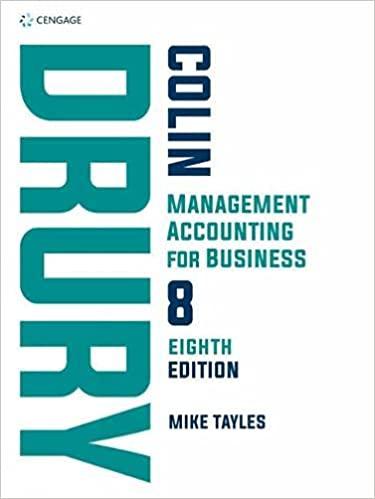Question
Your company owns a small shopping centre and lets the space to small retailers. Business has been limping along given the disastrous effects of the
Your company owns a small shopping centre and lets the space to small retailers. Business has been limping along given the disastrous effects of the COVID-19 virus and the associated lock-downs imposed by companies globally. You are painfully aware that your current business model of letting space to shops is under threat, but you are a resilient manager and plan to make some changes that will allow you to take advantage of the situation.
Your current rental income is made up 100% from small, stand-alone traders focussing in speciality goods. These shops have been very hard hit by current events and you have lost 30% of your rental income due to some of them closing their stores. You are not sure if the rest will stay, and so you have realised that you are too exposed to this type of a tenant. You want to try and diversify your income by renovating the currently free space to allow for it to be rented to individuals or small companies wanting access to modular office spaces with shared facilities (e.g. meeting rooms and reception areas). They will pay rent and all direct costs (electricity and water) will be shared by the tenants on a pro-rata basis.
You have discussed your plans with an architect and it seems that you will be able to convert the available space in to mini office units relatively quickly. It will cost you R1 250 000 in terms of new fixtures and fittings, but you will also have to write off old ones that have a book value for tax purposes of R200 000 (hint: this should save you some tax). The new fittings will last for 5 years and have an expected salvage value of R50 000 at this point in time. Given this life, you look at this as a 5 year project. The new fixtures and fittings can be written off for tax purposes over 3 years. The renovations will allow you to rent out the space for R5 000 per month for each mini-office unit and there is space to create 8 units in total. This is quite exciting for you as the previous rental you were receiving for this space was only R30 000 per month. You believe that you will be able to let 50% of these units in the first year and then you believe that they should be fully let for the rest of the project's life. You have paid the architect R20 000 for their plans and advice to date. You do not expect to pay them anything more.
Your company will borrow 50% of the money for this project. Its cost of debt is 10% and the WACC of the company is 18%. The relevant corporate tax rate is 28%. You can ignore inflation for this question.
a. For this project, provide the necessary calculations to show that the incremental investment and incremental operating cash flow as shown in Table One to the right are, in fact, correct.
(Incremental investment cash flows: 4 marks
Incremental operational cash flows: 6 marks
= 10 marks in total)
b. Use the cash flow figures provided in Table One (not your own) to show that the Net Present Value (NPV) of the project is -R6 665.74 and the Internal Rate of Return (IRR) is 17.76%.
(2 marks each = 4 marks)
c. Based purely on the results of the NPV and IRR analysis calculated in the previous question, should you invest in this project? Explain why or why not, making reference to the results of the NPV and IRR analysis.
(3 marks)
d. What two factors are excluded from all NPV or IRR analyses that should be includd to give a more complete picture of the project's ability to create value? Give a specific example of each factor in the context of the project.
(4 marks)
e. Identify two key risks to the project. Can you give any ways that you can/should manage these risks?
(4 marks)
f. Discuss the three types of breakeven analysis and explain how the cash flow breakeven concept might not be helpful with making this decision?
(5 marks)
| Table One: Hand Sanitiser Project - Investment and Operating Operating Cash Flows | ||||||
| Year | 0 | 1 | 2 | 3 | 4 | 5 |
| Incremental Investment Cash Flows | -R1,250,000 | R56,000 | R0 | R0 | R36,000 | |
| Incremental Operational Cash Flows | R0 | R293,000 | R461,000 | R461,000 | R336,000 | R336,000 |
| Total Incremental Cash Flows | -R1,250,000 | R349,000 | R461,000 | R461,000 | R336,000 | R372,000 |
Step by Step Solution
There are 3 Steps involved in it
Step: 1

Get Instant Access to Expert-Tailored Solutions
See step-by-step solutions with expert insights and AI powered tools for academic success
Step: 2

Step: 3

Ace Your Homework with AI
Get the answers you need in no time with our AI-driven, step-by-step assistance
Get Started


